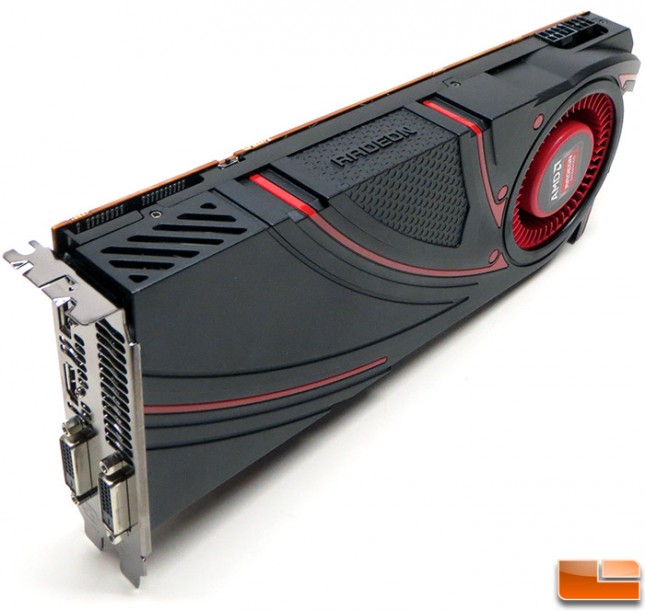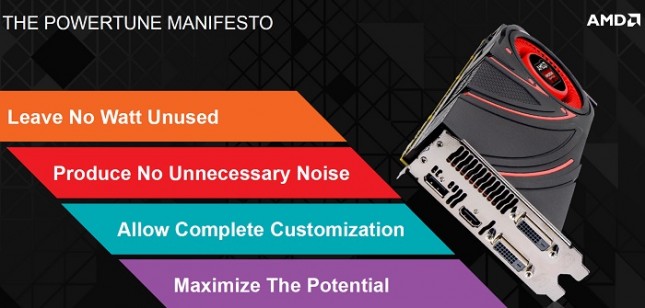AMD Radeon R9 290X 4GB Video Card Review
Final Thoughts and Conclusions
AMD began using the Tahiti GPU in December 2011 for their high-end performance graphics cards and still continue to use it to this day on the new Radeon R9 280X series. This GPU proved to be a thoroughbred workhorse for AMD, but it is getting a little long in the tooth for the top echelon of gamers. AMD and NVIDIA have been using an N+2 schedule for their GPU roadmap in recent years, so this every other year cadence was to be expected. It also doesn’t appear to be changing anytime soon.
| Radeon R9 290X | Radeon R9 280X | Radeon HD 7970 | |
|---|---|---|---|
| Release Date | October 2013 | October 2013 | December 2011 |
| Original SRP | $549 | $299 | $549 |
| GPU | Hawaii | Tahiti | Tahiti |
| Process | 28nm | 28nm | 28nm |
| Transistors | 6.2 billion | 4.31 billion | 4.31 billion |
| Stream Processors | 2816 | 2048 | 2048 |
| Clock Speed | 1000 MHz | 1000 MHz | 925 MHz |
| Frame Buffer | 4GB | 3GB | 3GB |
| Memory Width | 512-bit | 384-bit | 384-bit |
| Memory Clock | 1250 MHz | 1500 MHz | 1375 MHz |
| Memory Bandwidth | 320.0 GB/s | 288.0 GB/s | 264.0 GB/s |
| Compute Performance | 5.6 TFLOPS | 4.1 TFLOPS | 3.79 TFLOPS |
| Texture Units | 256 | 128 | 128 |
| ROPs | 64 | 32 | 32 |
| Typical Board Power | ~250W | ~250W | 250W |
The AMD Radeon R9 290X uses the brand spanking new Hawaii GPU and breaths fresh life into AMD’s high-end desktop graphics card series. Not only was the AMD Radeon R9 290X able to best the Radeon R9 280X/Radeon HD 7970 GHz edition by a sizable margin, but also caused some issues for NVIDIA. Our testing showed that the AMD Radeon R9 290X was able to perform better than the NVIDIA GeForce GTX 780 and the GeForce GTX Titan in most of the games and synthetic benchmarks that we ran for this review. This is pretty damn impressive considering the Radeon R9 290X has a suggested retail price of $549 and the NVIDIA GeForce GTX 780 is currently available online for $649 and the NVIDIA GeForce GTX Titan runs $999. From a price versus performance standpoint, the AMD Radeon R9 290X is a clear winner.
When it comes to performance the Radeon R9 290X is aimed at Ultra HD resolutions and we put it to the test today at the standard resolution of 1920 x 1080, 2560 x 1600 and even 5760 x 1080 on our Eyefinity setup. We had no issues on any of these monitor arrangements and found the Radeon R9 290X performed really well across the board. In fact at on our 57 x 10 Eyefinity setup it dominated the top of the performance charts and only fell behind in one game title to an overclocked GeForce GTX 780. For those that want more performance, just overclock the Radeon R9 290X! We were able to overclock the card to get on average a 12.5% performance boost in real game titles! For $549 the AMD Radeon R9 290X is the performance king for those wanting to game with an Ultra HD monitor.
If the AMD Radeon R9 290X looks like an enticing card and you wanted Battlefield 4, there is very limited bundle (around 8,000 pieces) will also be made available tomorrow. The Radeon R9 290X Battlefield 4 Game Edition video card is basically the retail version of this reference card with the a key for EA’s Battlefield 4. We reached out to ASUS and XFX and found out that ASUS will be selling their BF4 Edition for $599.99 and XFX will be selling theirs for $579.99! Both cards are physically identical when it comes to the hardware, so you can get BF4 for as little as $30 extra! Not a bad deal considering the standard BF4 PC Download will run $59.99.

The Radeon R9 290X was able to take the performance crown back from NVIDIA thanks to the new Hawaii GPU, but there are so many things about this card that we haven’t had a change to look at. AMD’s Mantle and TrueAudio technologies look good, but there are no games out right now that use them. AMD also only sent us one Radeon R9 290X, so we can’t take a look at how the new ‘bridge-less’ PCI Express CrossFire interconnect works. We were able to take a brief look at the cards new PowerTune system, which is a very key feature of this card.

AMD basically threw away the old PowerTune and completely overhauled it from the ground up. The key to this solution is the new second generation voltage regulator that allows for much finer control of the voltages and has allowed AMD to move to fully dynamic clocks. AMD’s goal was to leave no Watt unused and to produce no unnecessary noise. This slide is interesting to us as the card can be loud in Uber mode and we noticed at times the fan wasn’t ramping all the way up, which meant that we could push the cards clocks further manually. It also comes set to run at 95C when at load and that might be a concern to some folks. AMD issued the following statement to us on the matter:
“Some of you have expressed concerns around acoustics and temperature. As noted in our explanation of the new mechanisms included in PowerTune on the 290 Series, we have designed the 290 Series to operate at a steady state of 95C. By running at 95C, we are both maximizing the performance and minimizing the acoustics of the product. We do this by increasing clocks/voltages and/or reducing the fan speed until the GPU runs at the temperature target. By having the GPU target at lower temperature, you sacrifice either performance or acoustics.
Some of you have expressed concern over the GPU running at 95C. Be assured, that 95C is a perfectly safe temperature at which the GPU can operate for its entire life. There is no technical reason to reduce the target temperature below 95C. However, like all aspects of PowerTune, this is completely within the control of the end user. If you would rather have you GPU operate at a lower temperature, such as 85C or 73C, we strongly encourage you to customize it to your preference and write about it in your review. This is, after all, the reason that we design products with this level of flexibility.” – AMD PR
AMD assured everyone that running at 95C for the entire life of the GPU is fine and that there is no reason to run below that. They also noted that you can lower the target temperature, but we showed you in our testing that will lower performance and increase the fan noise. If there was ever a card that you should water cool this might be it. Some people won’t like the high target temperature and the fan noise, but a full water block for the Radeon R9 290X would fix all that. An AMD Radeon R9 290X with a full coverage block… It would solve all the concerns some have with this card and still be about the same price as the GeForce GTX 780 as the card would run you $549 and you can get a full coverage block from EKWB for $127! That would be a sick setup for those that are willing to do a custom water cooling solution. That said, the AIB’s should also be coming out with custom cards in the weeks ahead and we can’t wait to see what companies like ASUS, Gigabyte, Sapphire, PowerColor and XFX can do with some of their nice custom GPU coolers. Traditionally the custom cards are 10-15 dollars more than the reference design and we can’t wait for those to start showing up. NVIDIA better get that GeForce GTX 780 Ti ready!

Legit Bottom Line: The AMD Radeon R9 290X didn’t have a flawless victory, but it won the majority of the benchmarks and outperformed more expensive offerings from NVIDIA. The Radeon R9 290X is the new champion for single-GPU desktop graphics cards!
